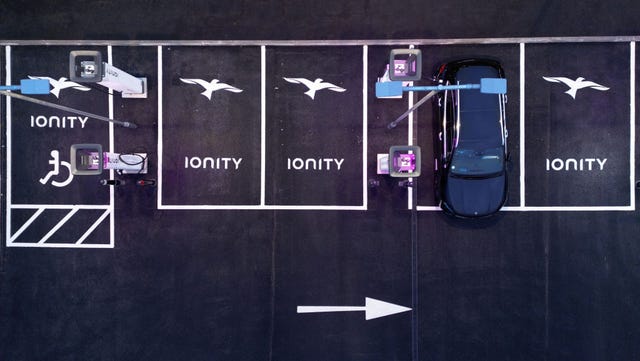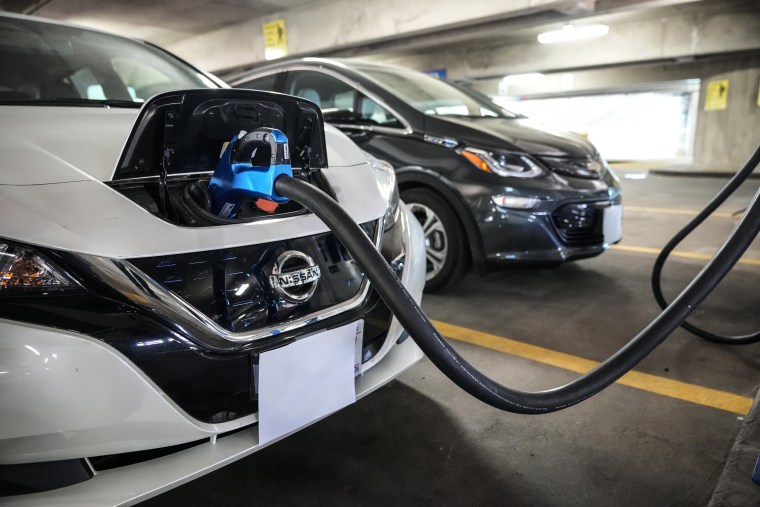The Future of Electric Vehicles and Why You Should Buy EV Charging news Now
The Future of Electric Vehicles and Why You Should Buy EV Charging news Now
Blog Article
Why 2024 Is a Game-Changer for EV Charging: Patterns and Insights
As we come close to 2024, the electric car (EV) billing landscape is established for considerable makeover, driven by the proliferation of ultra-fast billing stations and innovations in smart charging innovations. This advancement is underpinned by raising investments from both public and personal sectors, which assure to minimize longstanding issues such as range stress and anxiety. Furthermore, the incorporation of renewable resource sources alongside favorable government policies is likely to redefine the sustainability and ease of access of EV infrastructure. These growths increase important inquiries concerning the future of EV adoption and the ramifications for sectors and consumers alike.

Development of Ultra-Fast Charging Terminals
How quickly are ultra-fast charging stations transforming the electric lorry landscape? The spreading of ultra-fast charging stations is a crucial advancement in the EV sector, dramatically boosting the benefit and usefulness of electric lorry ownership. These stations, qualified of supplying billing speeds up to 350 kW, can charge an EV's battery to around 80% in as low as 15-30 minutes, efficiently reducing array anxiousness among customers.
The growth of ultra-fast billing facilities is being driven by both public and private investments, reflecting a tactical change towards sustainable transport services. Major automotive makers and energy firms are teaming up to install these terminals along major highways and metropolitan centers, producing a considerable network that sustains long-distance travel and everyday use.
In addition, developments in battery modern technology are complementing this development, permitting automobiles to make the most of the raised charging speeds. As the variety of ultra-fast billing terminals continues to rise, they are anticipated to play a critical function in accelerating EV fostering, cultivating a change towards a cleaner and even more sustainable future. This development not only boosts user experience yet additionally solidifies the stability of electrical lorries as a mainstream transport alternative.
Developments in Smart Charging Innovation
With the increasing combination of electronic innovation in the electrical car industry, developments in clever charging technology are considerably boosting the efficiency and comfort of EV billing. Smart billing systems take advantage of connection and data analytics to maximize the billing procedure, permitting users to charge their lorries when electrical energy rates are lowest and demand on the grid is marginal.

Interoperability is one more essential innovation, as brand-new standards and procedures allow different EV models and billing terminals to connect perfectly. This improves individual experience by giving extra obtainable charging options throughout numerous networks. Inevitably, the evolution of smart charging innovation represents a considerable action in the direction of an extra straightforward and lasting EV community, leading the way for wider fostering and integration into life.
Assimilation of Renewable Power Resources
The assimilation of renewable resource resources right into EV charging infrastructure is coming to be increasingly vital as the demand for lasting services grows. This pattern not only helps in reducing the carbon footprint linked with electrical vehicle charging but additionally boosts grid strength by promoting decentralized energy manufacturing.
Solar and wind power go to the leading edge of this combination, with many billing terminals now incorporating photovoltaic panels or being constructed in proximity to wind ranches. These renewable resources can produce clean electricity, giving a lasting energy supply for EVs. In addition, innovations in energy storage space innovations, such as batteries, help with the reliable storage of excess energy created during peak manufacturing hours, guaranteeing that billing stations can run effectively even when sustainable generation is reduced.

Development of Charging Framework
As electrical vehicle (EV) fostering accelerates, the development of charging framework has come to be an important focus for stakeholders across the auto and energy fields - EV Charging news. The requirement for a accessible and durable charging network is necessary Go Here to support the expanding number of EVs when traveling and to ease range anxiety amongst consumers
In 2024, we are experiencing substantial investments from both personal business and public entities focused on improving the billing landscape. This consists of the installment of fast-charging terminals along highways and in urban centers, which can charge EVs in a portion of the moment contrasted to conventional chargers. Furthermore, partnerships between car manufacturers and power carriers are facilitating the implementation of ingenious charging options to satisfy varied customer requirements.
Additionally, innovations in modern technology are bring about smarter billing systems that maximize power circulation and minimize expenses. The combination of these systems is vital for fitting the anticipated boost in demand as more customers change to electrical wheelchair. The growth of charging infrastructure not just sustains the EV market however likewise plays an important role in achieving more comprehensive sustainability objectives, making it an essential element in the evolution of transportation.
Federal Government Plans and Incentives
Federal government policies and rewards are progressively shaping the landscape of click for more electrical automobile (EV) adoption and billing infrastructure development. Federal governments around the world are recognizing the immediate requirement to transition to cleaner transport options, resulting in the implementation of numerous campaigns focused on speeding up EV fostering. These policies usually consist of tax credit reports, refunds, and grants for customers and organizations that invest in electric lorries and charging terminals.
In enhancement to direct economic incentives, several governments are developing ambitious targets for EV sales and mandating the installment of charging framework in brand-new developments. Several nations have actually committed to phasing out interior burning engine vehicles within the next More hints years, developing a sense of seriousness that drives both customers and manufacturers toward electrical alternatives.
Furthermore, public-private collaborations are arising as a vital element of these efforts, promoting investment in charging networks and making sure prevalent accessibility. By aligning regulative frameworks with monetary motivations, federal governments are not only fostering a conducive atmosphere for EV adoption however additionally resolving concerns related to vary stress and anxiety and charging accessibility. This durable plan landscape is readied to make 2024 an essential year in the change to electrical mobility.
Conclusion
The year 2024 is set to transform the electric car billing landscape with the expansion of ultra-fast billing terminals, advancements in smart billing innovations, and the combination of renewable resource sources. The growth of charging infrastructure, bolstered by supportive federal government plans and motivations, will certainly attend to variety stress and anxiety and improve the appeal of electric lorry possession. Collectively, these developments will cultivate a lasting and easily accessible environment for electrical automobile adoption, ensuring a durable future for the market.
As we approach 2024, the electrical automobile (EV) charging landscape is established for substantial change, driven by the proliferation of ultra-fast billing stations and advancements in clever charging technologies. The spreading of ultra-fast charging terminals is an essential advancement in the EV sector, dramatically improving the convenience and usefulness of electric lorry ownership. Clever charging technologies assist in remote monitoring and administration, allowing customers to arrange billing sessions through mobile applications.
Federal government policies and motivations are increasingly forming the landscape of electric automobile (EV) fostering and charging framework development.The year 2024 is established to revolutionize the electric lorry charging landscape through the expansion of ultra-fast billing stations, innovations in smart charging modern technologies, and the integration of sustainable power sources.
Report this page